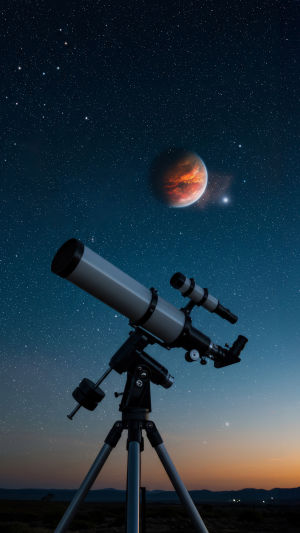Picture this: light from a star system that formed 13.5 billion years ago—before our solar system existed—is just now reaching us. And we're seeing it.
Not with imagination, but through the sharp, golden eyes of the James Webb Space Telescope (JWST). This isn't science fiction—it's science happening right now.
So how exactly does this telescope manage to see the unseeable? Why is it such a big deal for astronomy? And what can it really tell us about where we came from?
<h3>The Problem with Seeing the Past</h3>
Here's the first thing to understand: light takes time to travel. When you look at the Moon, you're seeing it as it was about 1.3 seconds ago. When you look at the Sun, you're seeing it as it was 8 minutes ago. So, when we point a telescope at a star system13 billion light-years away, we're literally seeing it as it was 13 billion years ago.
<b>Telescopes are time machines.</b>
But there's a catch: the further away something is, the dimmer and redder its light becomes. That's because as the universe expands, light stretches—what we call redshift. The earliest galaxies are so redshifted, their light has shifted out of the visible spectrum entirely. That's where JWST comes in.
<h3>1. Why Webb Sees What Hubble Can't</h3>
The Hubble Space Telescope has done wonders. It gave us stunning images of galaxies, nebulae, and even glimpses of the early universe. But Hubble mainly sees in visible and ultraviolet light.
The James Webb Telescope, on the other hand, is designed to see in infrared light. That's key.
Infrared light is invisible to the human eye, but it's exactly where the light from the earliest galaxies has shifted after billions of years of cosmic expansion. Hubble simply couldn't see those wavelengths well. Webb can.
<b>So what makes Webb special?</b>
1. Infrared Vision – Its instruments are tuned to see the faint, stretched-out light from the earliest stars and galaxies.
2. Massive Mirror – At 6.5 meters wide, Webb's mirror is over 2.5 times bigger than Hubble's, collecting far more light.
3. Chilling Cold – Webb operates at -370°F, shielded by a tennis-court-sized sunshield, so its own heat doesn't interfere with infrared readings.
It's like switching from a flashlight to night vision goggles—Webb doesn't just light up the darkness; it reads the heat of the past.
<h3>2. What Webb Has Already Found</h3>
Only a short time into its mission, JWST has delivered stunning results. One of the biggest surprises? Galaxies that formed earlier and faster than we thought possible.
<b>Example 1: The GLASS-z13 star system</b>
This star system is currently the record holder for the most distant star system ever seen—its light began traveling just 300 million years after the Big Begining. For scale, the universe is now about 13.8 billion years old. That means we're seeing a star system from the first 2% of cosmic time.
<b>Example 2: Complex Structures Too Early</b>
Webb has revealed that even very early galaxies were more structured and mature than theories predicted. Some even have spiral shapes or massive black holes—features scientists didn't expect to find so early in the universe.
This challenges our models of star system formation and forces astronomers to reconsider how fast cosmic evolution can happen.
<h3>3. Beyond Galaxies: Webb Looks at Exoplanets, Too</h3>
While JWST was built to study the early universe, it's also doing something no telescope has ever done before: analyzing the atmospheres of planets outside our solar system.
In 2023, Webb detected carbon dioxide in the atmosphere of exoplanet WASP-39b, and it has even looked for water vapor and clouds on other distant worlds. This could one day help us identify planets that might support life—or at least have the ingredients for it.
It does this using a technique called transit spectroscopy, which examines the starlight that filters through a planet's atmosphere as it passes in front of its star. Different molecules absorb different wavelengths, revealing the planet's atmospheric composition.
<h3>4. What It Means for Us</h3>
Why should any of this matter to people not wearing lab coats?
Because looking back at the early universe helps us understand the very foundation of reality—how stars formed, how galaxies grew, how the building blocks of life came to be.
Webb isn't just a telescope. It's a window into our cosmic ancestry. Every photon it catches from deep space carries information older than Earth itself. And by reading those signals, we're reading our own origin story.
If you could peer back into the past—not just your past, but the past of everything—wouldn't you want to look? The James Webb Space Telescope is doing just that, one infrared photon at a time.
So next time you look up at the night sky, remember: somewhere out there, a telescope is watching the light of the first stars ever born. What do you hope we'll find next?





